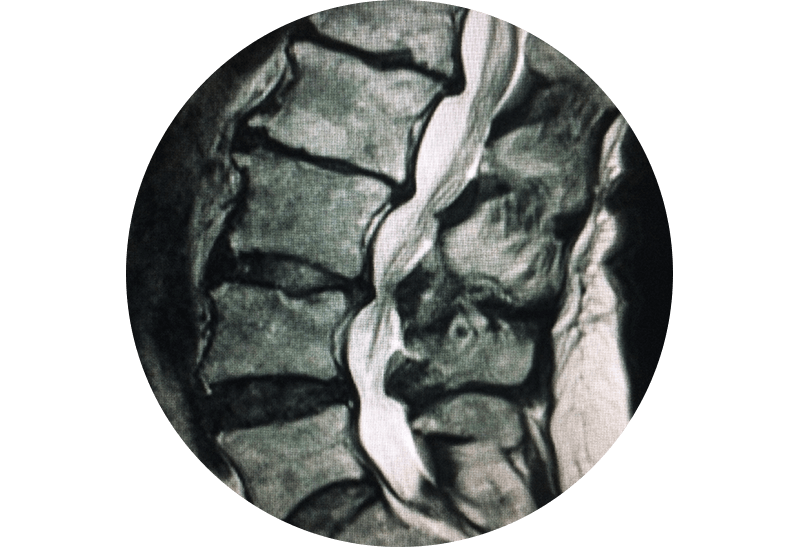Lumbar Stenosis
- Home
- Conditions
- Lumbar Stenosis

Lumbar spinal stenosis is a common cause for nerve pain. This condition is a result of narrowing of the spinal canal in the lumbar spine or lower back. The spinal canal is the tunnel (formed by your vertebrae, discs and laminae) through which the spinal nerves run through. The spinal nerves exit the spinal canal through openings on either side called foramen.
This narrowing can cause pressure on the nerves which travel through your lower back into your legs. This pressure may cause symptoms in the legs. There are different types of lumbar spinal stenosis including foraminal stenosis and central canal stenosis.
By the age of 50, up to 95% of people will have degenerative or age-related changes in their spine. Most individuals with degenerative changes will not have any symptoms despite the presence of these changes on tests such as X-rays and MRI, and therefore will not require treatment. In some, these degenerative changes may cause narrowing of the spinal canal and/or foramen resulting in pressure on the spinal nerves. The lumbar or lower back levels are more commonly affected which leads to symptoms, such as pain, numbness or weakness, radiating into one or both legs. You may experience increased leg pain when walking, standing or bending backwards.
What causes lumbar spinal stenosis?
The most common cause of lumbar spinal stenosis is age-related wear and tear to our joints or osteoarthritis. Arthritic changes may lead to narrowing of the spinal canal putting pressure on the spinal nerves which run through the spinal canal. Other causes of lumbar spinal stenosis include:
- Herniated discs
- Tumors
- Instability
- Trauma
Symptoms of lumbar spinal stenosis
In the early stages, people who have lumbar spinal stenosis may have no symptoms. For the majority of people, symptoms usually develop gradually over time. Symptoms of lumbar spinal stenosis may include:
- Burning pain or dull ache that radiates down from the lower back into one or both buttocks and may also involve one or both legs.
- A tingling sensation, cramping, weakness, or numbness in the legs
- Weakness in a foot which results in difficulty lifting your foot when walking or standing on the ball of your foot (referred to as foot drop)
- Bladder or bowel impairment/dysfunction (only in severe cases)
Patients generally report symptoms with standing and walking, and improvement of their symptoms with sitting or leaning forward (less pain walking when leaning on a shopping cart).
Frequently Asked Questions
Lumbar spinal stenosis is diagnosed through reviewing your medical history, a physical exam and MRI.
Treatment is dependent on the location of the stenosis and the severity of your symptoms.
It is largely dependent on the type of surgery that is required but may be as early as 2 to 4 weeks.
Receive the care you need right away
Horizon Surgical can expedite your minimally invasive spine surgery to be done in a timely fashion. From beginning to end, you can typically receive your minimally invasive spine surgery within a couple months. With our reduced recovery times, you’ll be able to get back to living your life and doing what you love most right away.
Call Us
Contact Us
- Phone: 403-619-2288
- Fax: 403-685-8137
Hours
- Hours of Operation:
Monday: 9:00am-4:00pm Tuesday: 9:00am-4:00pm Wednesday : 9:00am-4:00pm Thursday: 9:00am-4:00pm Friday - Sunday: Closed
